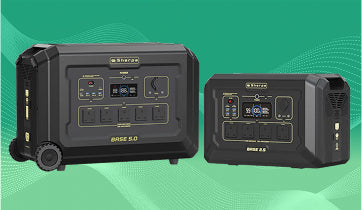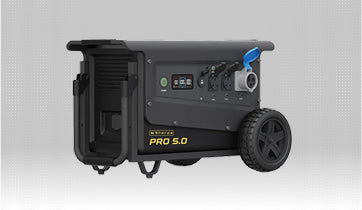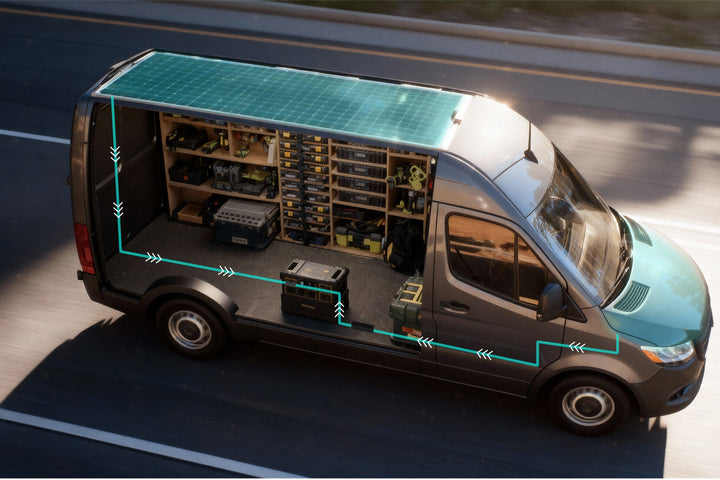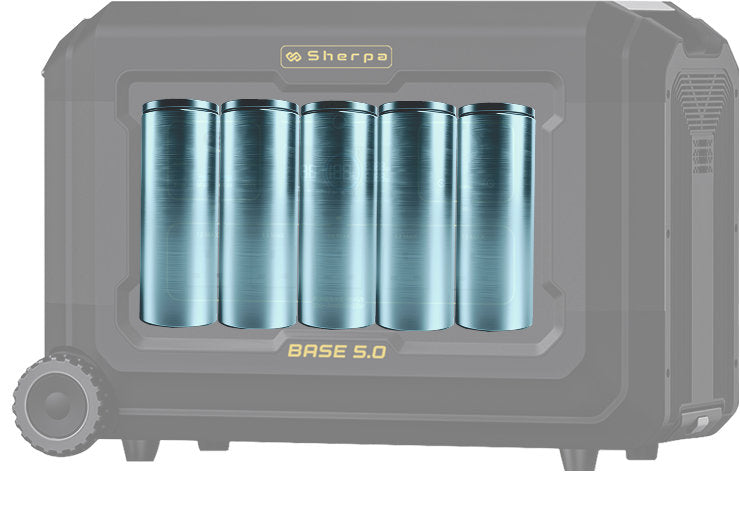Lithium Iron Phosphate (LiFePO₄ or LFP for short) batteries are the go-to choice for portable power stations, solar energy storage, and electric mobility. Their safety, long life, and environmental benefits make them superior to traditional lead-acid or older lithium chemistries.
But like any battery, proper care is essential. One of the most common mistakes everyday users make is allowing their battery to enter deep discharge; a state where the battery is drained too far, which can cause irreversible damage.
In this post, we’ll explain what deep discharge is, why it causes harm, how to prevent it, and the simple steps you can take to keep your battery healthy for many years.
What is Deep Discharge?
Simply put, if the battery is run down to 0%, then is left for a long period of time without being recharged, it will head towards a state where it cannot be recharged!
A deep discharge happens when the battery’s voltage drops below the safe operating threshold, where by putting the regular charge current back into it could cause overheating. The clever Battery Management System (BMS) built-in to all our power stations makes sure firstly, that it shuts the operation down at 0% and secondly, that it gently recharges the battery when at lower levels.
When the display shows 0%, there is still a 15-20% reserve in the battery, providing a safety net that effectively gives you more time to recharge before the cells are in deep discharge and become damaged. Batteries do dissipate their energy slowly however, even when not in use and once that reserve is depleted, the BMS will likely prevent charge going to the cells altogether for your own safety. This is when the battery undergoes the magical transformation into...a brick 😱.
How to Prevent Deep Discharge🛡️
-
Don’t store them at 0% for long
-
If you’re putting your battery away for weeks or months, don’t leave it empty.
-
The sweet spot is around 40–60% charge.
-
-
Check regularly when not in use
-
LFP has a low self-discharge rate (ie. it very slowly drains, even while turned off), but it still drops so keep that in mind.
-
Every 2–3 months, check the % and recharge if it’s dropping toward the lower limit. We suggest using an auto-reminder on your phone or computer to turn on your power station and charge if necessary.
-
-
Avoid running it right down to 0% 🪫
-
Unlike older chemistries, LFP doesn’t need full discharge cycles to stay healthy. It prefers partial cycles (e.g., 20–80% charge). This can increase the life span of your batteries by almost double.
-
-
Recharge after running it down sooner rather than later
Everyday Battery Maintenance Tips
-
Treat your LFP like the fuel tank in your car - don’t run it dry.
-
Aim to use the middle 60% of the capacity to extend the life span.
-
Keep it in a cool, dry place when not in use (avoid extreme heat or cold).
The table below shows an estimation of use and how it affects battery life.
|
Range of use |
Number of uses |
Lifespan |
|
100 to 0% |
3,500 |
~ 10 years |
|
90 to 10% |
5,000 |
~ 13 years |
|
80 to 20% |
6,000 |
~ 16 years |
The Bottom Line
LFP batteries are durable and reliable, but they’re not indestructible. Deep discharge is the most common cause of premature failure for everyday users. By understanding the risks and following simple maintenance habits, you can extend your battery life to well over a decade and get the most from your investment.
Taking care of your LFP battery isn’t complicated, it just requires a little attention. Keep it charged, avoid draining it to zero, and your battery will return the favour with years of dependable, eco-friendly power🔋







Leave a comment
All comments are moderated before being published.
This site is protected by hCaptcha and the hCaptcha Privacy Policy and Terms of Service apply.